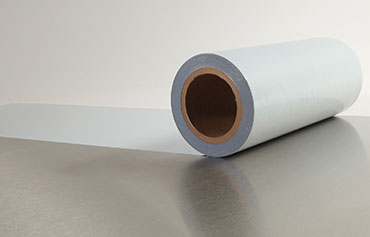How To Clean Old Adhevise Material From A Door

Getting rid of the gunk
Your Problem: Gummy, Gunky Residue
That shipment of sheeted stainless, aluminum extrusions, painted chassis boxes, or window panes just came in. Subsequently removing the protective film, it's clear that every last i of them has some kind of yucky, sticky, agglutinative residue left on them. Everyone is scratching heads, andasking you, "How do we get rid of this gunk?"
Your Job: Find A Solution
To figure out how to remove adhesive residue, use the data below to help you develop a applied cost-constructive residue removal procedure specific to your detail situation. This quick analysis guide will decide if information technology's a big task or small, if you demand special removal agents, or if simple remedies for protective flick removal will piece of work. (The departure between aprocedureand aprogramme is that one goes to work on the event while the other goes into a desk drawer until the issue has gone abroad. 😉
Once you take figured out the scope and severity of the sticky problem, cleaning upward the goo should be relatively like shooting fish in a barrel. Provided below is a listing of removal agents.
Troubleshooting Guide for Agglutinative Residue Removal PDF
Step 1: Appraise the severity of the situation
Ask yourself: Is the rest really an issue? Is it an insignificant but unsightly trace? Will information technology wearable off on its own? Tin it removed equally a matter of class by a manufacturing operation, such every bit sand-blasting?
IfNO, brand certain this consequence is known and factored into quality control.
IfYES, the adhesive remainder actually is an consequence and it needs to be removed, then keep reading.
What is the scope of the project?
- A few pieces that can probably be cleaned upwards manually;
- Quite a few pieces that will need a significant amount of endeavor to clean upward manually;
- A bang-up many pieces in a high volume production performance that will probably demand some degree of automation to be applied.
How quickly does the residuum need to be removed?
- Inside a few minutes
- Inside a few hours
- Inside a few days
Step 2: Assess Resources.
Accept stock of what is bachelor and on-hand to remove the goo, and realize that the larger the projection, the more critical this step becomes.
Select an adhesive removal agent. To a great extent, the removal amanuensis that y'all select volition dictate the other resources and rubber measures that may be needed.
- Practice you have the workspace for an un-anticipated project? Give this particular special consideration if your removal agent requires "soak time."
- How will you handle and store the cloth pre- and post-procedure?
- What devices are needed for applying the adhesive remover?
- Exercise you have temperature control in the projection surface area? (Frozen adhesives are hard to budge.)
- Is there exhaust venting and/or a breather apparatus if the remover requires it?
- Do you take sufficient quantities of disposable rags?
- Volition yous demand a power washer? plastic scrapers? rubber gloves?
- How will you dispose method of solvents, sludge, rags, etc.?
Get-go Removal
You may be able to get busy correct abroad, or a trial procedure may be needed to verify effectiveness.
- Apply removal agent to adhesive residuum
- Let agent work for prescribed length of time. (Warm or heated surfaces speed the procedure.)
- Wipe or scrape off softened residue.
- Wipe down or launder off, as necessary, until residue and/or the agent is fully removed.
- Safely dispose of sludge and rags.
- Tweak and adjust procedure, as appropriate.
Selecting an Adhesive Residue Removal Agent
If you merely take one or two items to clean up, chances are there are several agents that will piece of work well for y'all.
If yous have a very big number of items to clean up, y'all may need to larn removal agents in 1-gallon, 5-gallon or even 55-gallon drums. Note that agents, such as nail polish remover (aka acetone) in 55-gallon-drum quantities pose a few safety issues. Avoid creating a haz-mat situation, if possible.
- Experiment with several removal agents to find the most effective one for your project.
- Use common sense, and read the characterization on the products before giving them a try.
- Seriously, READ the manufacturers' recommendations for the prophylactic utilise of their products. Some adhesive removal agents could literally blow the roof off of your establish
- Some agents can actually destroy your surface. For example: Adhesive Off by CrystalTek is quite good at dissolving acrylic adhesives. It is also very proficient at dissolving acrylic surfaces, such every bit spas, bathtubs, some countertops, acrylic glass, etc.
A Brusque List of Agglutinative Removal Agents
- Liquid dishwashing detergent, preferably in warm h2o
- Liquid dishwashing detergent that contains ammonia
- Window cleaner that contains ammonia
- Mineral oil aka babe oil
- Acetone (highly flammable)
- Agglutinative Off (available in large quantities, dries out pare)
- Goo Gone
- Formula 409
- Petroleum jelly
- Shampoo for hair
- Vinegar
- WD twoscore (highly flammable vapors)
Source: https://www.surfacearmor.com/resources/how-to-articles/how-to-remove-adhesive-residue/
Posted by: mcmullenwhinevesock1945.blogspot.com


0 Response to "How To Clean Old Adhevise Material From A Door"
Post a Comment